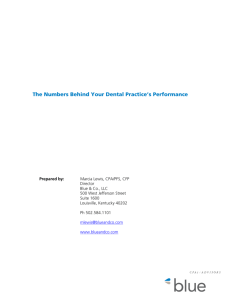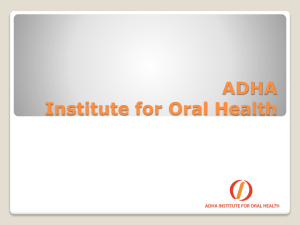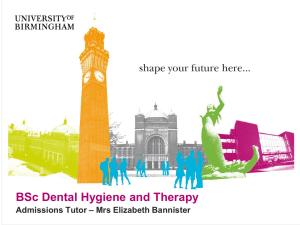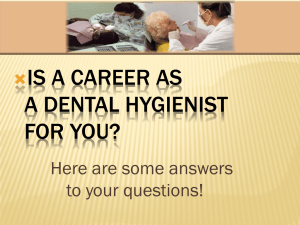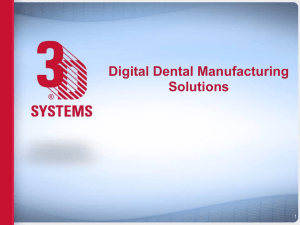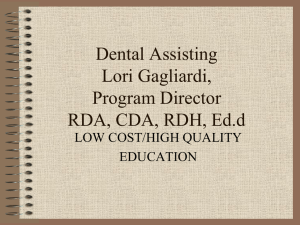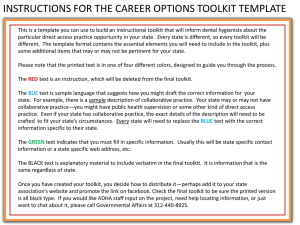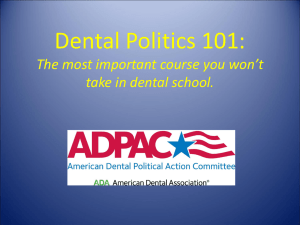NCH Oral Health Project Activities to Support Providers and National
advertisement
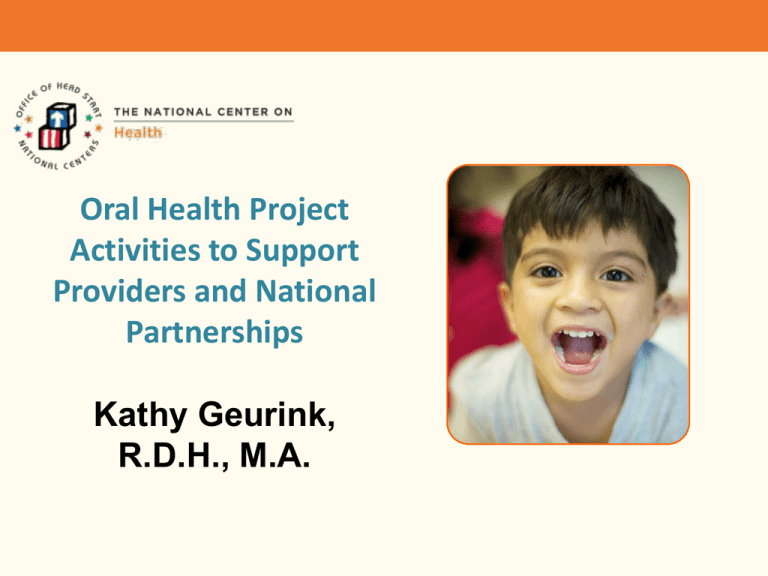
Oral Health Project Activities to Support Providers and National Partnerships Kathy Geurink, R.D.H., M.A. Oral Health Project Guiding Principles • Promote evidence-informed, practice-based, developmentally appropriate, and culturally sensitive messages, materials, and services • Focus on prevention and early intervention • Preserve what works while promoting innovation • Leverage public/private partnerships • Communicate and coordinate with health professionals, child care professionals, and representatives from government agencies, organizations, and programs Oral Health Project Activities 1. Use a three-pronged approach targeting parents, programs, and providers within a framework for oral health activities that includes disease prevention and management, access to care, and systems integration. 2. Focus on the oral health needs of infants, children, and pregnant women enrolled in Head Start. Oral Health Project Activities (continued) 3. Establish and maintain a communication network at the national, regional, and state levels to share information with national organizations, regional offices, Head Start state collaboration offices, state Head Start associations, state oral health programs, health professionals, and others about Head Start oral health issues. 4. Collaborate with the American Dental Hygienists’ Association to use volunteer dental hygienist contacts in each state to serve as primary information conduits between NCH and state contacts. Oral Health Project Activities (continued) 5. Seek guidance about ways to accomplish oral health program activities, with particular attention to the unique needs of American Indian and Alaska Native Head Start programs, Seasonal and Migrant Farmworker Head Start programs, and children with special health care needs. Oral Health Project Framework for Promoting Oral Health Services Disease Prevention and Management Access to Care Systems Integration Disease Prevention and Management • • • Collaborate with organizations to widely distribute NCH evidenced informed information and materials. Assist in locating policy statements, guidelines, training materials, and new research, and disseminate these. Present at national and regional trainings. Access to Care • Contact key individuals in each state to determine their ability to assist with T/TA, linking programs to dental homes, and other Head Start activities. • Collaborate with organizations to increase the involvement of federally qualified health centers with Head Start programs. Access to Care (continued) • Continue to gather input from the Office of Head Start, national organizations, and key informants on strategies to develop a system of oral health care and oral health services for Head Start, as well as methods of tracking outcomes. • Continue to collect, review, and share promising and successful state and local models and practices via the Early Childhood Learning & Knowledge Center, newsletters, and presentations. Access to Care (continued) • Continue to collaborate with state Medicaid and Children’s Health Insurance Programs (CHIPs), state oral health programs, state dental associations, and others to support the Centers for Medicare & Medicaid’s Oral Health Initiative to increase the number of Head Start participants enrolled in Medicaid or CHIP who receive preventive oral health services. • Promote work force, case management, and reimbursement models that increase access to/completion of care. Systems Integration • Summarize and analyze Head Start program information report oral health service data to identify national/regional trends, successful programs, and programs needing TA. • Promote T/TA on valid tools to collect data on the oral health of children enrolled in Head Start that will allow for comparisons across states and can be submitted to the National Oral Health Surveillance System. Cross-Cutting Issues • Share links to resources, and promote inclusion of Head Start and perinatal/early childhood oral health information in learning modules for students and residents. • Encourage dental manufacturers, insurers, grantmakers, and others to contribute or leverage resources for Head Start activities. What is the Role of the Head Start-Dental Hygienist Liaison? • Dental hygienists in every state are serving in volunteer roles to: • Provide a communication link between NCH and Head Start oral health activities and programs. • Collaborate with state organizations and ongoing networks (e.g., Dental Home Initiatives), including state dental directors and Head State state collaboration office directors, to address prevention and access-tocare issues. What is the Role of the Head Start-Dental Hygienist Liaison? • Dental hygienists in every state are serving in volunteer roles to: • Assist in promoting evidence-based preventive and educational services to Head Start statewide. • Share links to resources with Head Start and other partners to improve consistent messaging on oral health. Examples of Success Stories


